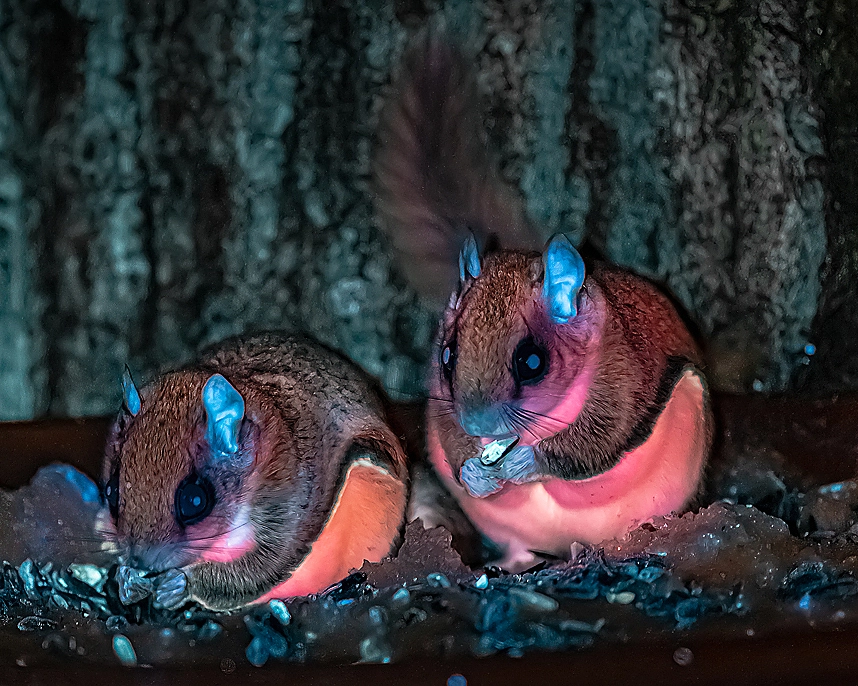
I awoke last night at midnight to flashes of light from a motion sensor floodlight on our deck. I wasn’t thinking of prowlers, because I suspected the flashes of light were triggered by Southern Flying Squirrels coming to visit for the sunflower seeds I had tossed out just before going to bed.
I crept downstairs and carefully opened the sliding door, letting in frigid February air. The deck light came on briefly, enough that I could see the tiny squirrels dashing up through an opening in the deck around a huge Northern Red Oak. Each squirrel would come up, grab a sunflower seed, then dash down the tree trunk out of sight. This happened so fast that I couldn’t see how many squirrels there were, though at one point I saw three. There may have been more. On this night they were nervous and did not stop long enough for any photos.
We’ve had Southern Flying Squirrels at our home in Michigan each winter, and I’ve photographed them at night several times using incandescent lights on the deck. They made for good photographs, with their gray-brown fur and a cuteness factor of huge bulging eyes and little pink lips, but their coloration was subtle to my eyes and essentially no different from most mammals, which are colored for camouflage rather than display.
Then scientific knowledge suddenly changed. About four years ago a Wisconsin forestry professor, Dr. Jonathan Martin at Northland College, was in the woods at night looking up toward the forest canopy with an ultraviolet flashlight for lichens and other fluorescing lifeforms, when a hot pink missile glided overhead. He identified this as a Northern Flying Squirrel, and its normally white belly lit up hot pink in ultraviolet light. He found this astounding, and asked a colleague to investigate flying squirrel skins in a couple of museum collections to see if the phenomenon could be confirmed. It turned out that in those collections, the bellies of all three species of North American flying squirrels–Southern, Northern, and Humboldt’s Flying Squirrels–glowed bright pink under UV light. Even specimens over 100 years old. Male and female, young and old, they nearly all glowed.
Since we have easy access to flying squirrels at our home in Central Michigan, I decided to observe this phenomenon for myself. I obtained a 365 nm UV flashlight that is powerful enough to look almost into the treetops and began looking at these squirrels on nights they chose to come to our feeding station. They don’t come every night, but when they do I often get up in the middle of the night to observe and try to photograph them. It isn’t easy to photograph little nervous squirrels by a relatively dim (to our eyes) UV light, but I’ve had some success represented by the pictures here.
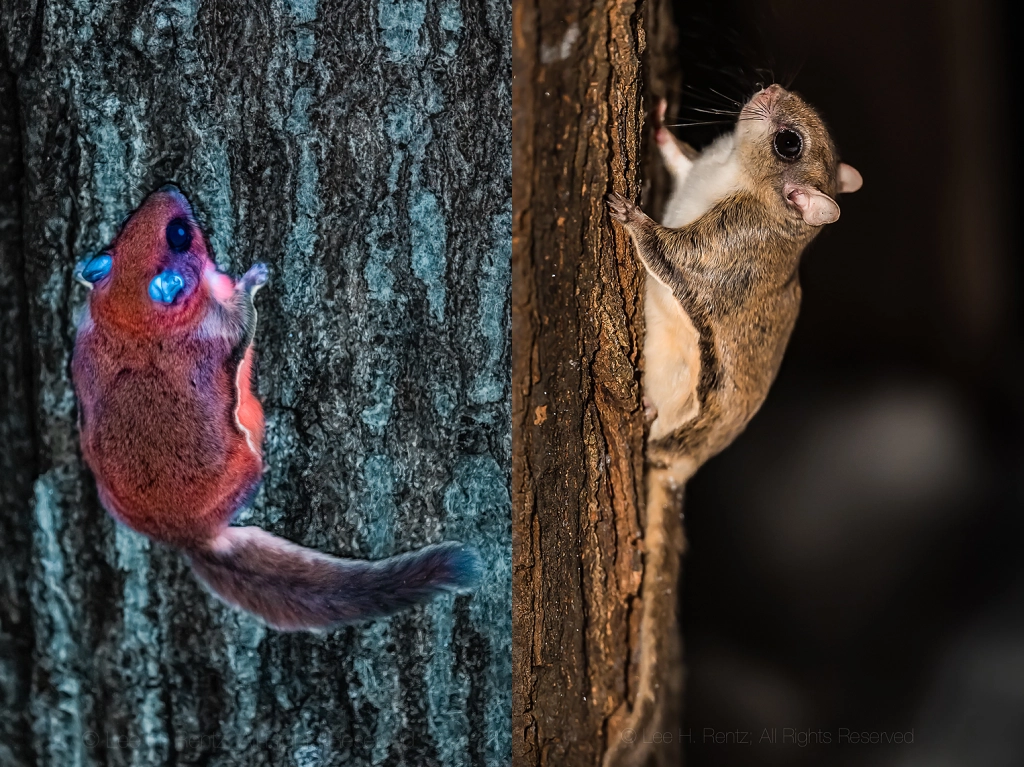
Why do flying squirrels glow? That is still unknown. What is known is that at dusk, dark, and dawn, the air is bathed in proportionately more ultraviolet light and far less light from the visible spectrum than in daytime. This UV light–when converted to visible light by fluorescence–makes the flying squirrels more visible to each other. This is even more true when snow blankets the forest, since snow reflects UV light. It also appears that flying squirrels’ eyes, unlike ours, can see into the UV spectrum, so this ability may also be involved.
Again: why do they use biofluorescence and UV light at night? There are a couple of possibilities that spring to mind. Based upon the three flying squirrels I observed on that recent February night, I think it’s possible that the squirrels use their bubblegum pink undersides to keep track of each other at night. These squirrels are highly social, with reports of 25 to 50 Southern Flying Squirrels roosting communally in a hollow tree. So why wouldn’t they follow each other to food sources? Some of my pictures show them sitting side by side, dining quietly together on the sunflower seeds I put out. They seem to enjoy a more peaceable kingdom among their kind than do the daytime Eastern Gray Squirrels and American Red Squirrels we also get in Central Michigan. Feeding together also means more big eyes to look for predators–much as goldfinches and other songbirds feed communally as a strategy to detect hawks.
There is another tantalizing possibility for the pink color. Three large owls that also live in this region–Barred, Barn, and Great Horned Owls–also have bellies that fluoresce hot pink under UV light, though their coverings are feathers rather than fur. These owls are the chief predators of flying squirrels. Do the flying squirrels mimic the owls to fool the predacious birds into thinking they are seeing other owls when in the air? Maybe. I find this possible. The fluorescing fur is mostly on the belly and undertail of the squirrels, with just a minor hint of color change on the back and virtually none on the tail. Once a flying squirrel lands on a tree trunk, its back and tail make it almost invisible to predators because the glowing belly is nearly hidden.
Alternatively, perhaps the owls are mimicking the flying squirrels, fooling the little squirrels into thinking they are seeing others of their own kind. This would allow the owls to silently approach the flying squirrels and suddenly grab the little creatures.
Or perhaps all three of these mechanisms are in play: bubblegum pink signals the presence of flying squirrels to each other, but also both disguises them from owls and identifies them to owls, if any of that makes sense. Coevolution at work.
Biofluorescence also extends to the Virginia Opossum in this region, but is apparently unknown in other mammals here. It turns out the phenomenon is new enough that the chemical and physical mechanism is still unknown. I suspect this will be studied in coming years, with possible applications for industry. Or not. Knowledge is its own reward.
I will be watching these creatures over the coming weeks and years, both with and without the assistance of UV light. The mysteries of nature are an ingrained part of my life and I find observations and photography endlessly fascinating.

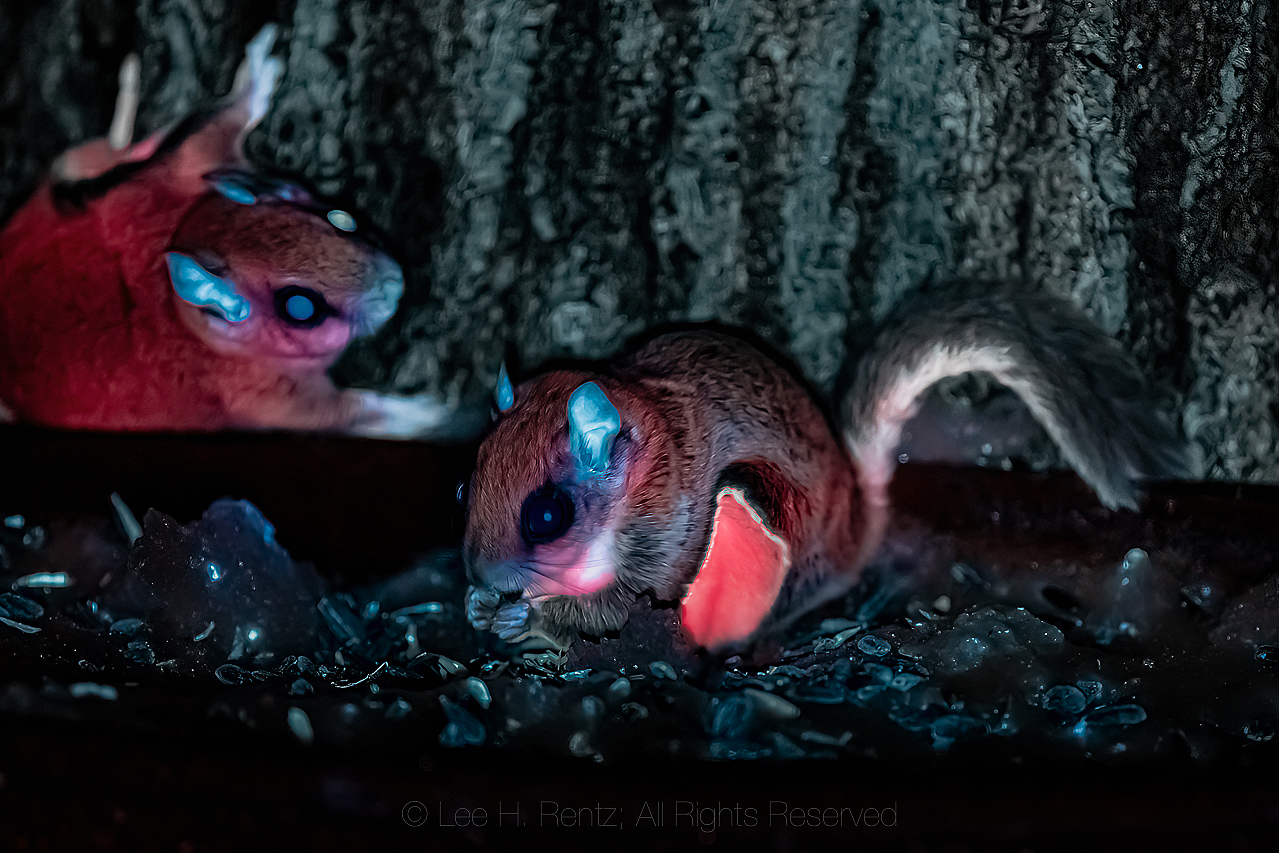
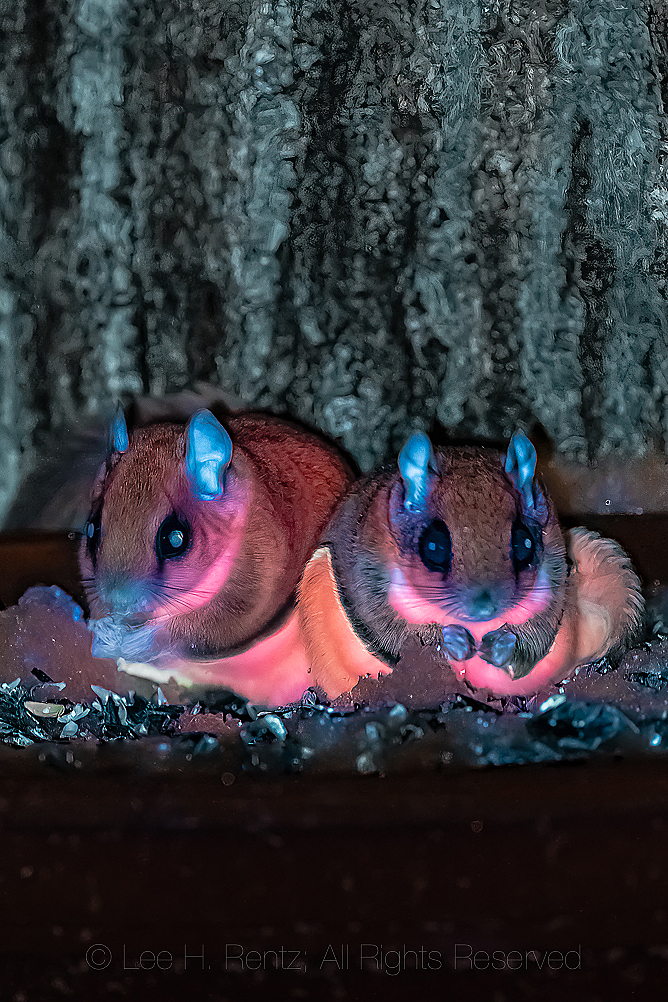
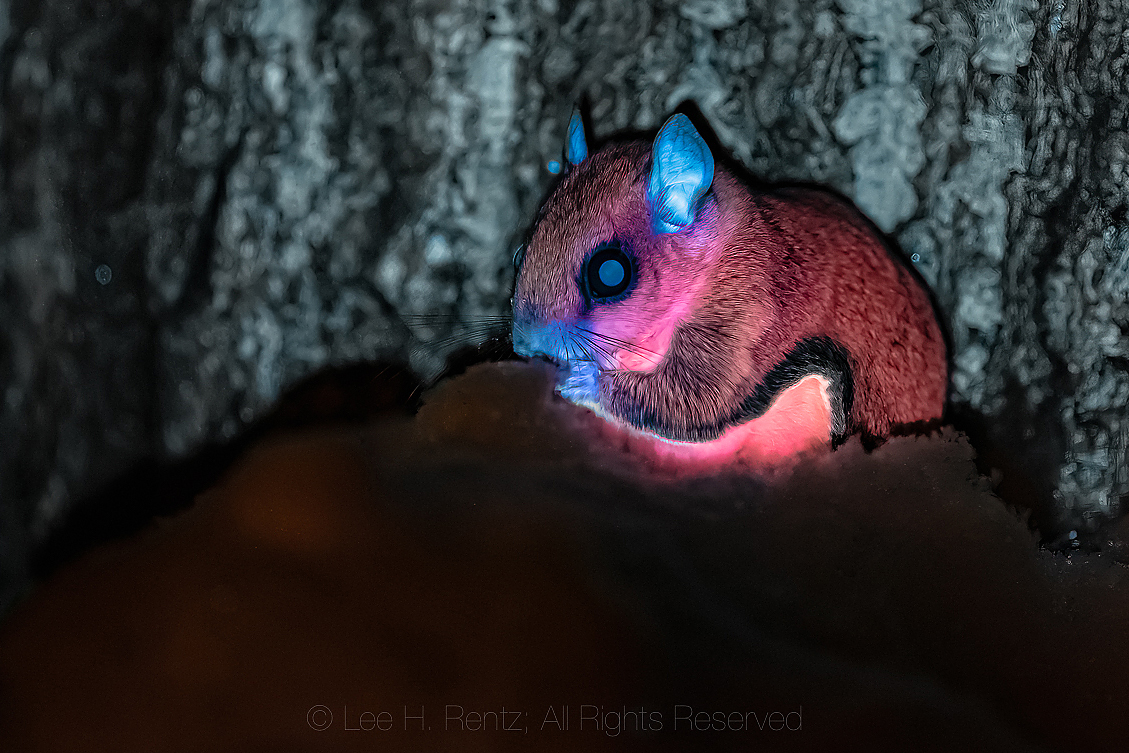

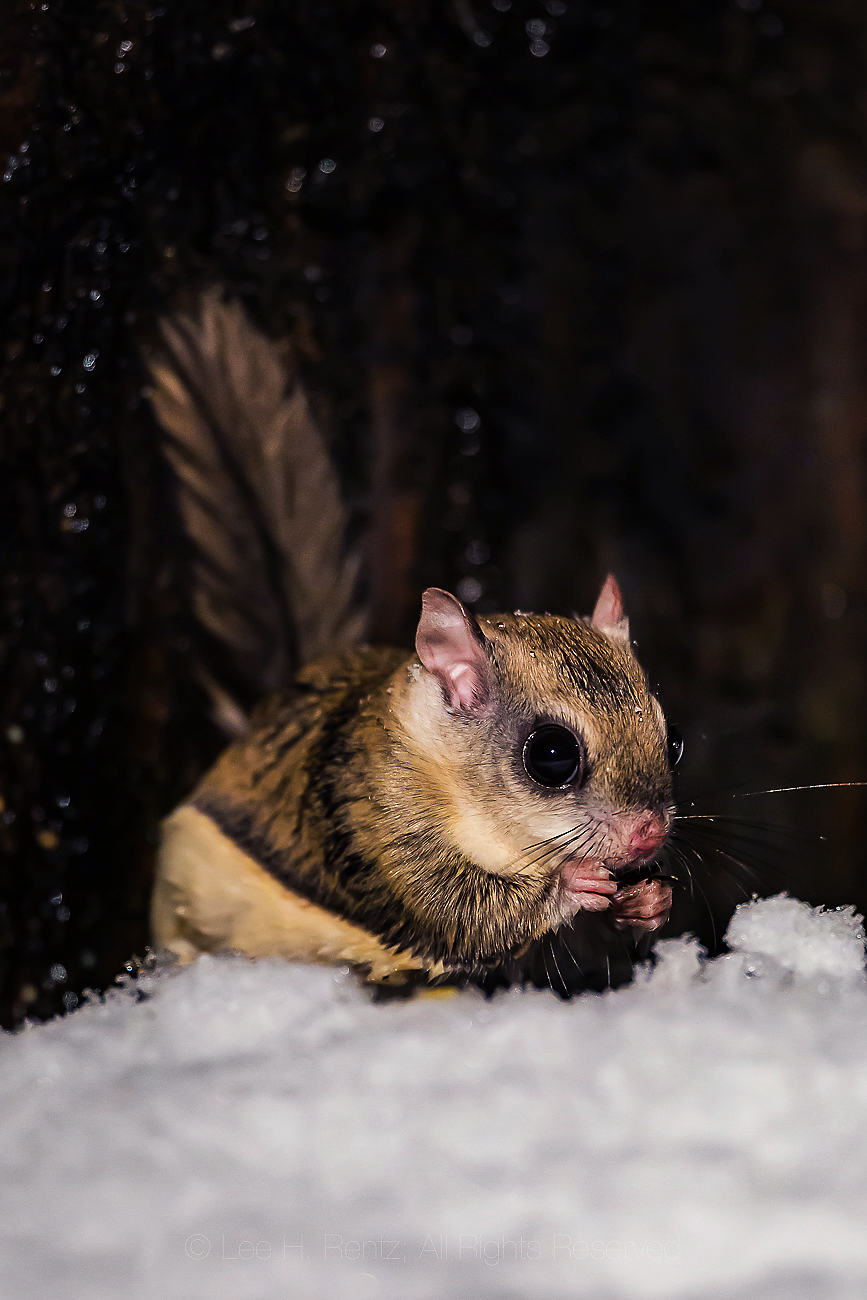
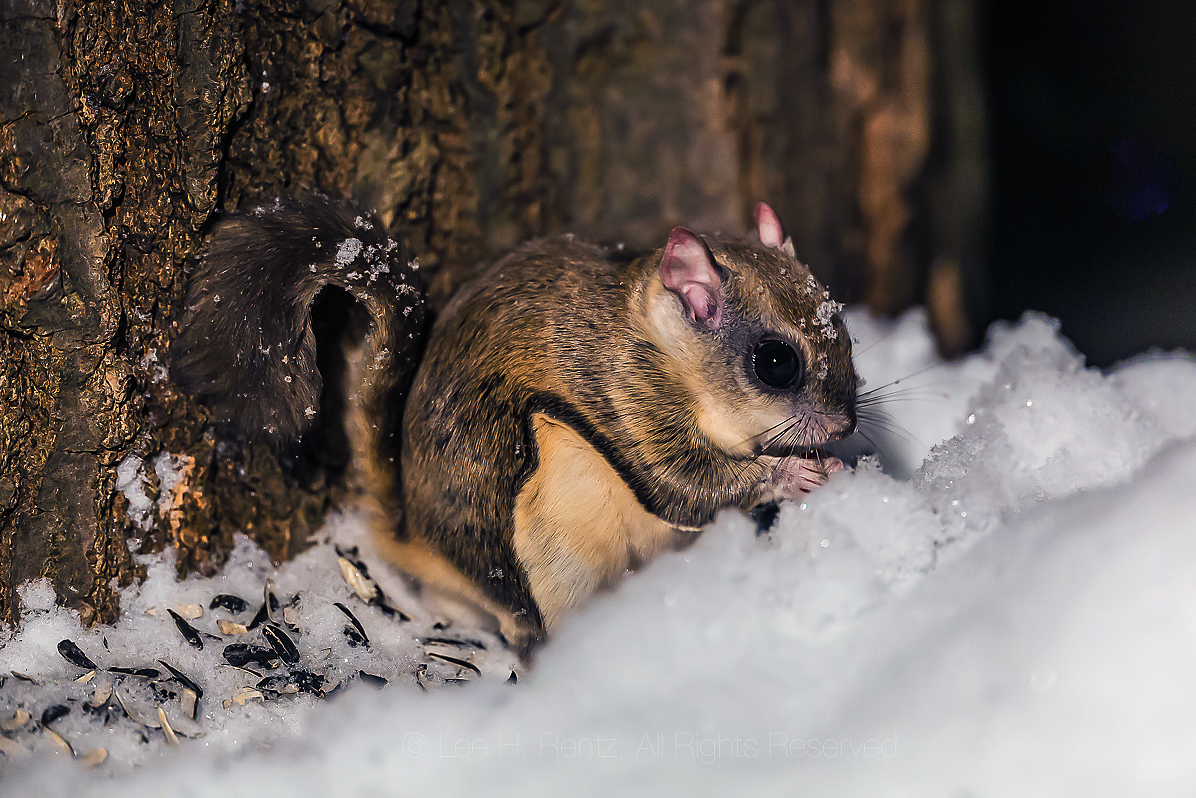


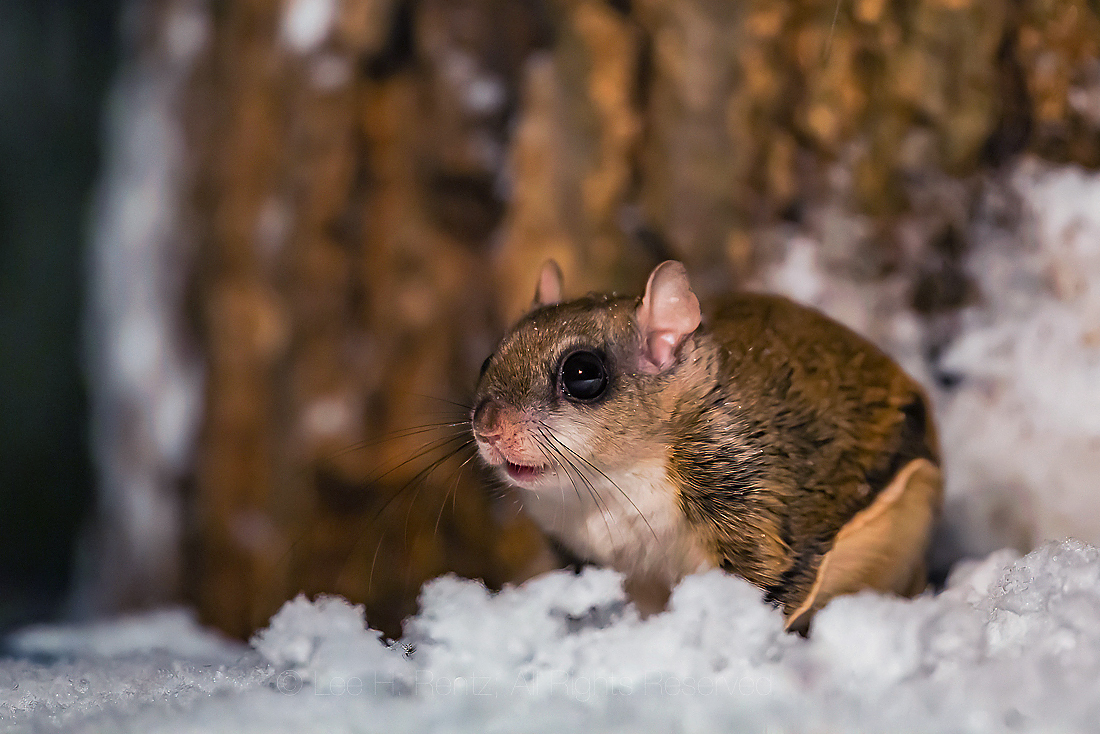
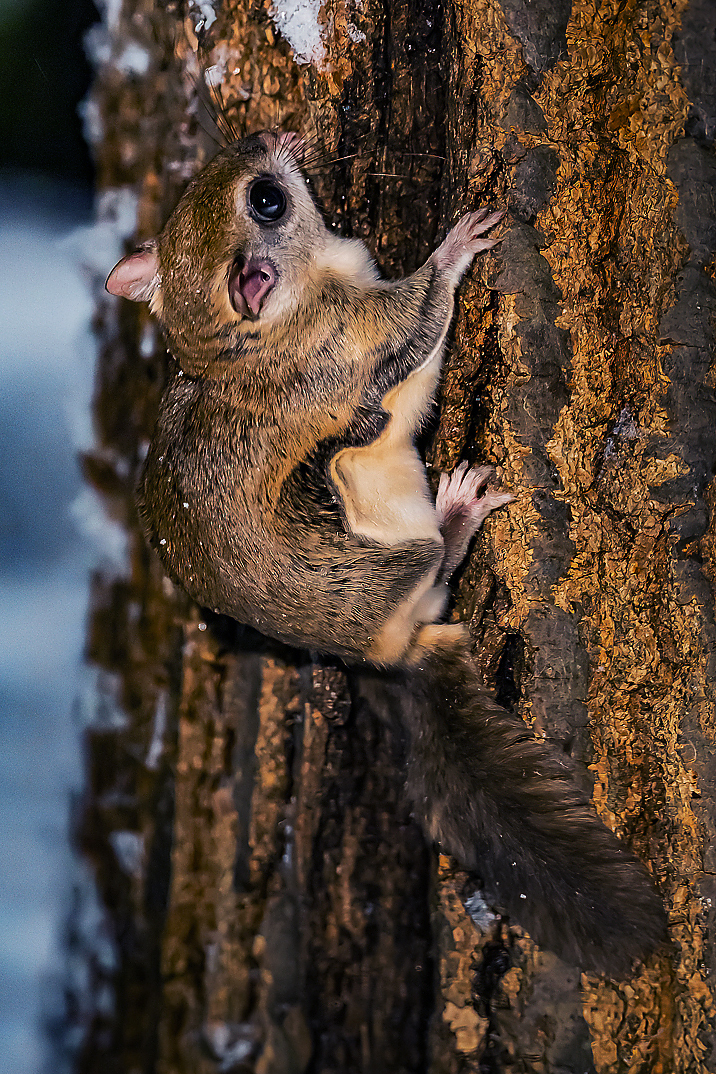
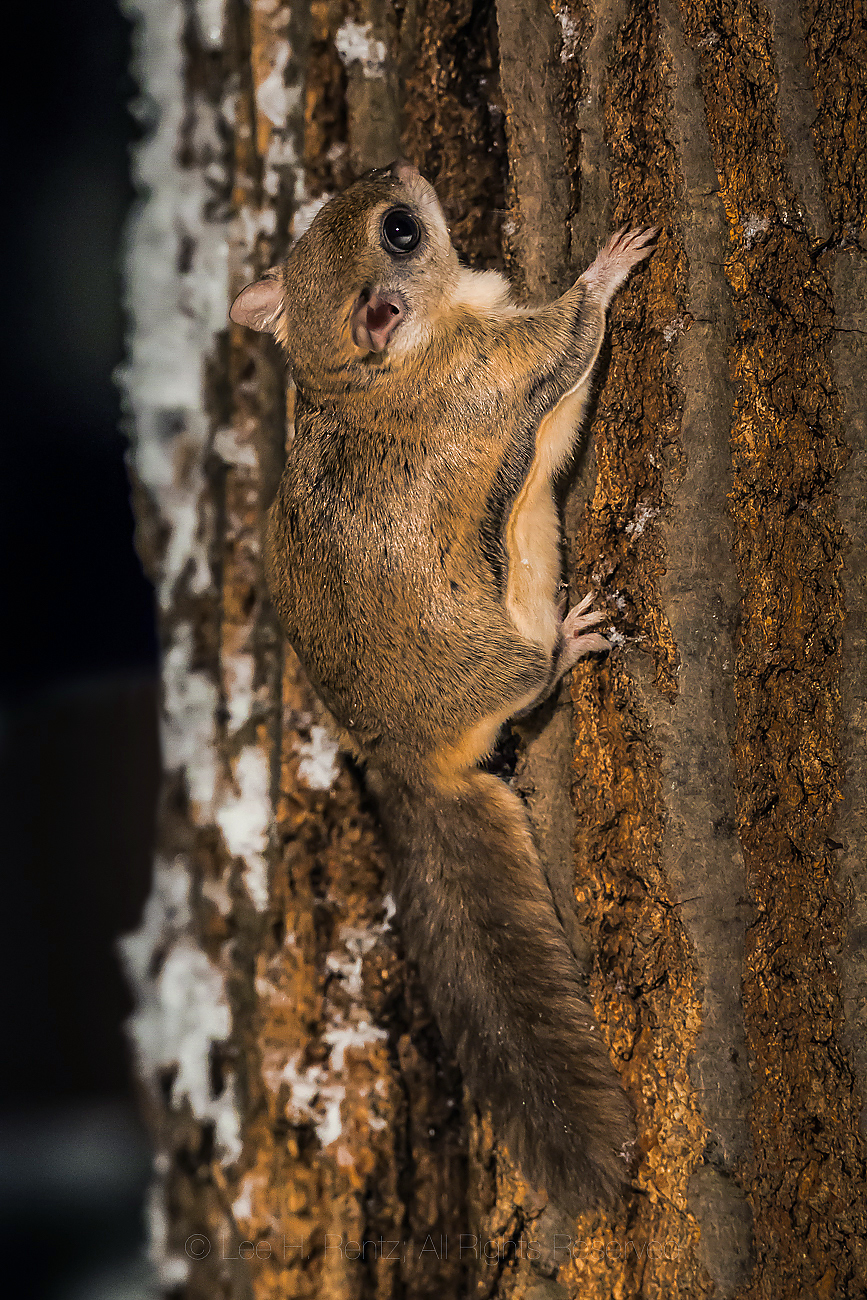


The photographs above are a good representation of the Southern Flying Squirrel in UV vs visible light. The final photograph shows the deck setting at night where all the pictures were taken, and includes one flying squirrel for scale. Click on the photographs to see them larger.
Here are some other sources that examine this discovery:
Ultraviolet fluorescence discovered in New World flying squirrels (Glaucomys) (Journal of Mammalogy)
Southern Flying Squirrel (Wikipedia)
Flying Squirrels Glow Fluorescent Pink Under Ultraviolet Light (Smithsonian)
